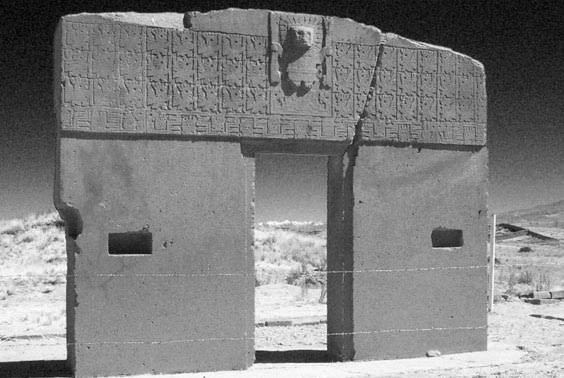THE LEGACY OF THE GODS


Based on material from The Divine Blueprint: Temples, power places, and the global plan to shape the human soul by Freddy Silva. ©2012. No unauthorized reproduction or sharing please.
“I asked the natives whether these edifices were built in the time of the Inca. They laughed at the question, affirming that they were made long before the Inca… that they had heard from their forebears that everything to be seen there appeared suddenly in the course of a single night.”
Thus reads the eyewitness account by Pedro Cieza de León when he came across the megalithic temple of Tiwanaku two miles above sea level on the Altiplano of Bolivia, incorporating a stadium-sized court of 99 standing stones, a stepped pyramid, and a pier constructed from 440-ton slabs of andesite and capable of accommodating one hundred ocean-going vessels. In reading de León’s diary it is clear he struggled for adjectives while attempting to describe what lay in front of him. The year was 1549.
Myths of temples and ‘cities of knowledge’ constructed by individuals of giant stature, both mentally and physically, exist far and wide, attached to Tiwanaku, Giza, Easter Island and Teotihuacan like magnetic mist.
The Egyptian texts place these builder gods in remote, possibly Palaeolithic times, for the era of dynastic kings supposedly only began in 3100 B.C. with the Pharaoh Menes, who was considered the first human ruler – that is, a descendent of a pure human bloodline. This was preceded by the era governed by the Akhu Shemsu Hor (‘Shining Ones, Followers of Horus’), builder gods whose lineage was of divine descent; prior to this, Egyptian history mentions the Occasion of the First Time, and we are informed the land was then presided by the Neteru (‘creator gods’) whose era was terminated by a catastrophic global deluge.
Advice to initiates in the temple of Edfu offers a glimpse as to what the builder gods may have looked like, since the initiates were instructed to “stand up with the Ahau” (‘Gods who stand up’) who measured 9 cubits tall. That’s approximately 15 feet or 4.6 meters!
As for the motivation behind the unusual temple builders, we need look no further than the walls of the Egyptian temple of Edfu and its Building Texts. This unique record is said to be a faithful copy of an older text which perished with the original temple after a global conflagration. It reveals that after founding the first primeval mound at Heliopolis (later the Academy), groups of builder gods set about locating other special mounds at carefully chosen locations that would act as foundations for future temples, the development of which was intended to bring about “the resurrection of the former world of the gods” following its destruction by a worldwide flood. It is stated that the Ahau were survivors from an island overwhelmed by a catastrophe that “inundated the former mansions of the gods,” and brought to an end a Golden Age.
We do not know exactly when human-constructed temples began, yet we do know that many of the structures we have inherited are far older than previously believed, and even what we see stands on the foundations of far older structures; Tiwanaku, for one, is now reliably dated to 15,000 BC.
It is also known that such places of power were constructed as close to a ‘navel of the earth’ as was permitted. These temples became microcosms of a macrocosm, protectors of a hotspot of energy in perpetuity, a reminder of the sacrality of place. In southern India, when the essence of Siva manifested as a phallic pillar on the eastern side of the sacred hill of Arunachala, the architect Visvakarma erected a temple around it and “became like a god.”
The deeds of this man of geometry and number would subsequently be re-enacted throughout the ages by other adepts, most notably by the architect and High Priest of Heliopolis, Imhotep, who brought the pyramid form to Egypt and added the step pyramid to the temple complex at Saqqara. He subsequently becomes a god.
These and many other acts had their basis in a supposed Golden Age, when creator gods of great stature, moved by an unshakable duty to the divine, created temples as ‘cities of knowledge’, what the Hindu call Jnana Puri.
Continue to part II
Return to Articles